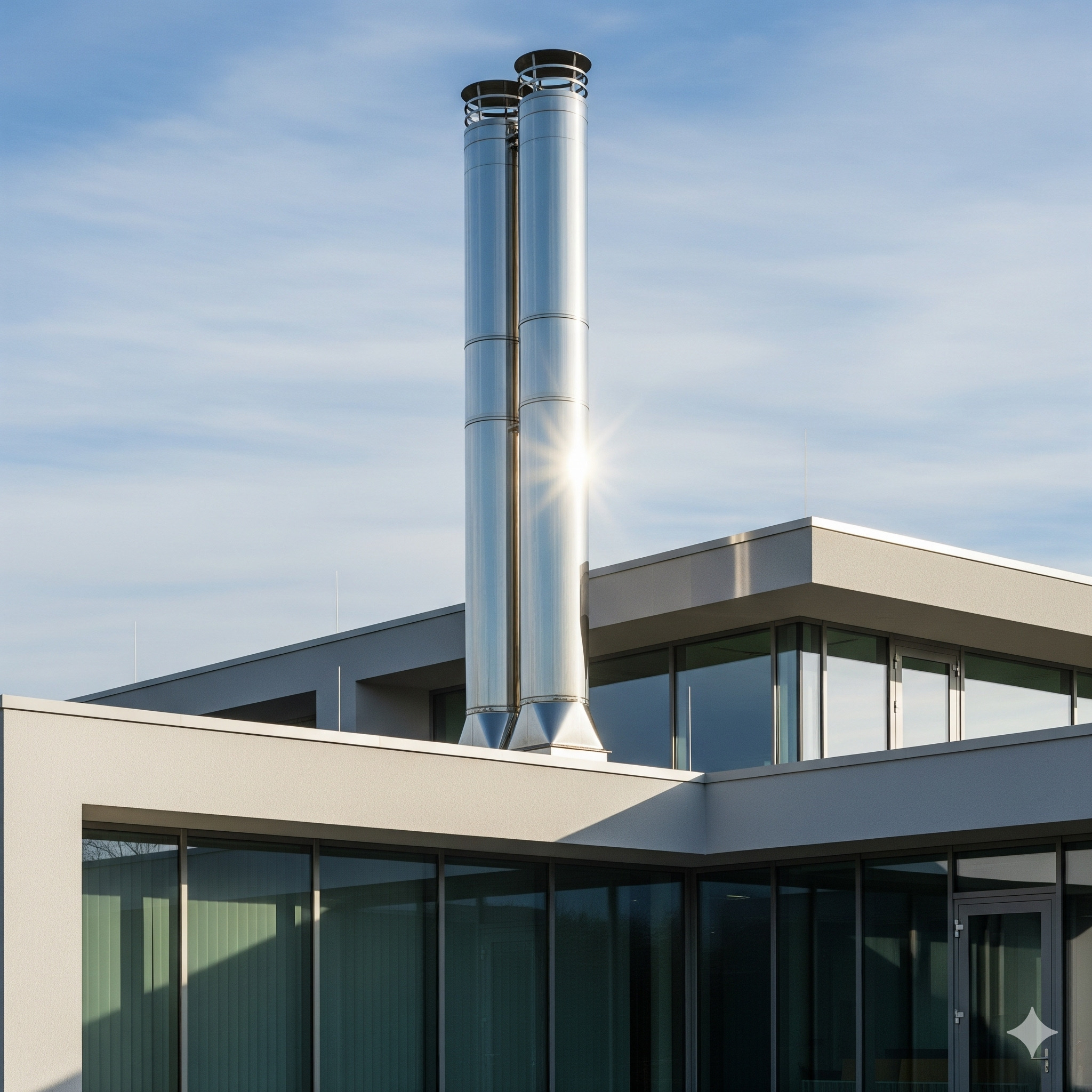

Application Areas of Double walled Flue Systems
Double walled flue systems are one of the indispensable components of modern building technologies. With advantages such as thermal insulation, safety, and durability, they are widely used in both residential and industrial structures. Thanks to the insulation layer between the inner and outer walls, heat loss is minimized even in outdoor applications, while the system’s performance and durability are enhanced.
Use of Double walled Flue Systems in Residences
In individual living spaces, Double walled flue systems are commonly used for the smoke discharge of heating appliances such as boilers, stoves, and fireplaces. Installed through building façades or rooftops, these systems ensure indoor safety while effectively expelling flue gases outdoors.
In residential projects, T-joint connections and cleaning caps are integrated to provide maintenance convenience. These systems offer high performance without compromising architectural aesthetics.
Industrial Applications of Double walled Flue Systems
Double walled flue systems are extensively applied in boiler rooms, generator rooms, steam production facilities, and chemical processes. In such environments, where high temperatures and heavy flue gas generation occur, the insulated structure of the flue enhances system efficiency and reduces fire risk.
In industrial settings, T-joint elements meet needs such as maintenance access and multi-device connections. Manufactured from stainless steel, these flue systems offer high resistance to corrosion and chemical impacts.
Safe and Aesthetic Solutions for Commercial Buildings
Double walled flue systems are also frequently chosen for commercial buildings such as hotels, hospitals, shopping malls, and restaurants that serve large numbers of people. In these structures, where flue systems are often visible from the outside, the aesthetic advantages of stainless steel become an important factor.
In such projects, the use of T-joints facilitates integration between devices and accelerates maintenance processes. Furthermore, their modular design shortens installation times and helps control costs.
Industrial Kitchens and Food Facilities
Double walled flue solutions are preferred in professional kitchens that generate intense heat and steam. Since the air from hoods is exposed to high temperatures and grease vapors, insulated flues play a crucial role in both safety and hygiene.
In these environments, the use of T-joints allows for regular cleaning and easy intervention, ensuring the maintenance of hygienic conditions.
Mobile and Prefabricated Structures
Double walled flue systems are also used in prefabricated houses and mobile structures, which are increasingly popular today. In these buildings, insulated flues are preferred to ensure indoor safety and resistance to outdoor conditions.
In compact spaces, T-joint usage saves space while enhancing functionality. Thanks to their lightweight structure, these systems are easy to install and provide great advantages in portable buildings.
Frequently Asked Questions (FAQ)
Are Double walled Flue Systems Only Used for Exterior Applications?
No. Double walled flue systems can be applied both indoors and outdoors. However, they are more commonly preferred outdoors, as they prevent heat loss and condensation.
Why Are T-Joints Used Together with Double walled Flue Systems?
T-joints meet the system’s needs for maintenance, cleaning, and multi-device connections. When combined with Double walled flues, they increase both safety and functionality.
Is Stainless Steel Mandatory in Flue Systems?
Although not mandatory, stainless steel flue systems are always a more favorable choice due to their long lifespan, resistance to high temperatures, and hygienic structure.
How Long Does It Take to Install Double walled Flue Systems?
Thanks to their modular design, installation time is quite short. Depending on the project, it may take from a few hours to a few days.
In What Sizes Are T-Joints Manufactured?
T-joint elements are designed and manufactured in various sizes according to the diameter of the flue system. The most common diameters range from 80 mm to 300 mm.














